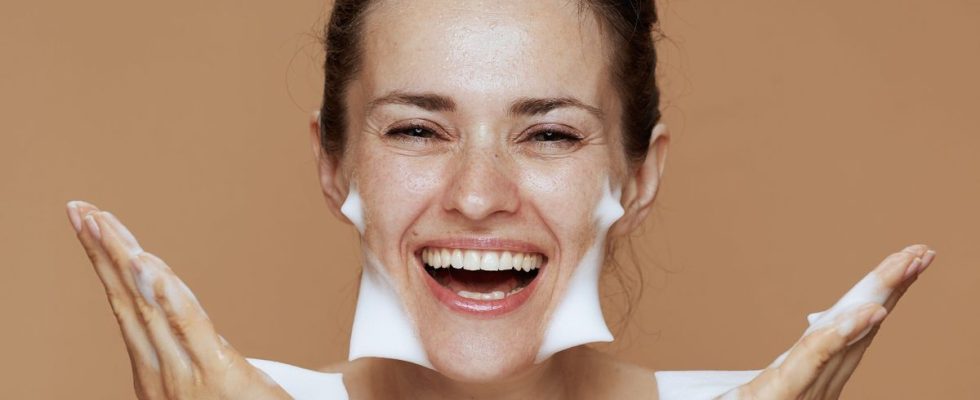Published on
Updated
Reading 3 min.
Lack of hydration, cold, pollution, allergies, stress: the skin is subject to various external attacks that can cause a feeling of tightness. A far from pleasant phenomenon which can also be the result of cleaning the skin, just after a shower for example, and which could be explained by the sending of specific signals… to the brain. The scientists behind this discovery believe that it could help improve the formulation of many cosmetics, and are even beginning to understand the skin as a potential communication tool.
Who has never had tight skin after a shower, or a simple cleansing? Even though we choose products specially formulated for the needs of our skin, this feeling persists and occurs regularly. A phenomenon that researchers from Stanford University, in the United States, decided to decipher. “This work provides a better understanding of how products affect the physical properties of our skin, which includes not only skin health, but also the sensory perception of the skin. This is a significant step forward. This allows us to better understand how to design these formulations.“, explained from the outset Professor Reinhold Dauskardt, main author of this work, in a press release.
The body’s main barrier
To carry out their research, the scientists started from a simple observation: the skin is not only the largest organ of the body, in terms of weight and surface area, but also the most exposed to external aggression. And for good reason, the most external and superficial layer of the skin, the stratum corneum, is the body’s main natural barrier, one of whose functions is to block potential external aggressions, including pollution, bacteria, or chemicals, and maintain humidity. Researchers explain that certain actions, such as using a cleansing product, cause the stratum corneum to contract, while others, such as applying a moisturizer, cause it to swell.
From this inventory, the authors of the study imagined that the mechanical forces generated by these distortions of the skin could potentially reach specific sensory receptors, the mechanoreceptors, to metamorphose into neurological signals. Which alert the brain, which results in a feeling of tightness. The researchers’ goal was to verify this theory via in vitro biomechanical testing, numerical modeling, and then an in vivo self-assessment survey, as detailed in the journal PNAS Nexus.
More specifically, it involved examining the effects of nine moisturizing formulas and six cleansers on skin samples taken from the cheek, forehead, and abdomen, then determining the changes made to the stratum corneum in the laboratory. , before integrating this information into a human skin model to try to detect the signals sent by the mechanoreceptors. Final step: compare these predictions with the sensations of tightness felt – or not – by the 2,000 women recruited in France to test the moisturizing creams, and the 700 women invited to China to evaluate the cleansers.
“Can we communicate through the skin?”
“We compared what we predicted to what the human subjects told us, and the planets aligned perfectly. In other words, we predicted exactly what they told us. This was an absolutely remarkable correlation with very high statistical significance“, explained the researchers. Some may then wonder what use such a discovery can have – especially since we cannot a priori change anything about this mechanism. This work can, however, allow laboratories and cosmetic brands to improve their formulas and develop products (even) better suited to everyone’s needs.
“[Ces méthodes] provide a framework for new product development. If you act on the outer layer of the skin by modifying its state of tension and stress, we can tell you how this information is transmitted and how it will be understood and reported by consumers“, explains Professor Reinhold Dauskardt. But that’s not all, researchers are already looking much further, wishing to deepen their research to develop, for example, wearable devices that would send intentional signals to the brain by acting on the stratum corneum .
“What we did was reveal how mechanical information passes from the outer layer of cornea to neurons located much lower in the layers of the skin. Now, can we communicate through human skin? Can we build a device to provide information to someone in a non-verbal, non-visual way, using our understanding of these mechanisms? This is one of the areas that interests us the most“, conclude the researchers.

